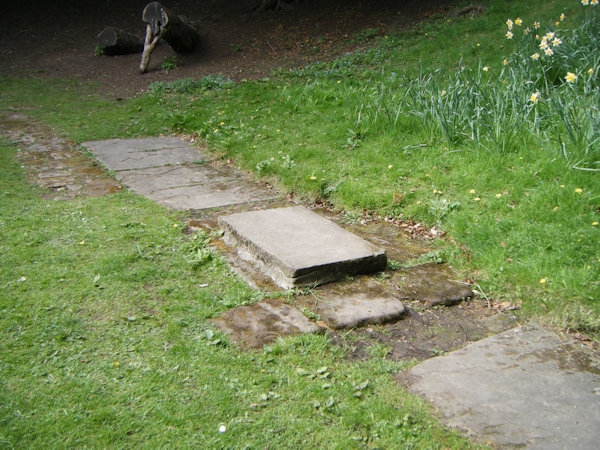 |
Dedication: Saint Mary the Virgin Location: Newstead Abbey Coordinates: 53.07784N, -1.19176W Grid reference: SK542537 Status: capped Heritage designation: none |
HOME - ENGLAND - NOTTINGHAMSHIRE
 |
Dedication: Saint Mary the Virgin Location: Newstead Abbey Coordinates: 53.07784N, -1.19176W Grid reference: SK542537 Status: capped Heritage designation: none |
In 1170, a small Augustinian priory was founded at Newstead by Henry II, who placed it under the patronage of the Virgin Mary. It seems to have been a rather unremarkable establishment, with little recorded of its history before its dissolution in the July of 1539. According to a piece published in the Journal of Horticulture and Cottage Gardener in 1877, this lack of historical records exists because "there was nothing worth recording", which in this case may well be true. After the priory was dissolved, it was converted, as was common at the time, into a country estate, and dubbed "Newstead Abbey". Many of the priory's original features survived, including the medieval fish-ponds, one of which is fed by the spring that has now become known as "St Mary's Well".
As is always the problem with holy wells that are located within the grounds of large country estates, it is not clear whether St Mary's Well was constructed as an aptly-named folly at some point after the Reformation, or whether it truly was a medieval holy well that was used by the monks of the priory for religious purposes. The well's alternative title, "Monks' Well", is definitely post-medieval and supports the idea that it is simply a garden feature. Undoubtedly, the monks would have used this spring regularly for practical purposes, given its proximity to the priory and its constant issue of fresh water, but there can be no absolute certainty that they regarded the well as holy, or treated it as such. The Historic Environment Record, which is definitely not a trustworthy source, claims that "there are Med refs [medieval references] to St Mary's Well"; if this is true, then this confirms that the site is not a folly and was once an authentic holy well. However, the Historic Environment Record cites a "personal comment" as the grounds for this claim, and provides no supporting evidence, so it cannot guarantee absolute certainty.
Possible medieval references aside, the earliest mention that I have found to the well's existence dates from around 1848, by which time the estate had become popular with American fans of the famous Lord Byron, whose ancestral home was Newstead Abbey. This reference takes the form of a series of "Notes Made in England and Scotland, in 1848-9", by the Rev J. A. Spencer, which was published in The Evergreen in 1852. Spencer described conversing with the gardener's wife during his visit to Newstead:
|
I was struck with the affectionate, yet sad, recollections of Lord Byron, which were entertained by the good old woman, the wife of the gardener, who accompanied us through the grounds. She is a hale, active body, though sixty-five years old, and grandmother to a troop of little boys and girls, one of whom stood ready by the side of the "holy well or spring," to furnish us with a glass to drink out of, and receive, with a curtsy, a penny in return. When she found we came from the far-off land of America, she seemed to open her heart, as though we could appreciate what she thought and felt. |
Almost all of the other references (usually written by American tourists) that I have come across to the site run in the same vein, and the spring appears to have become a well-known feature in the gardens. In 1874, P. Austin Ryan advised "pilgrims to the shrine of Byron" to "drink of the waters of this 'Holy Well'", which he claimed had been in "constant use" since the priory's foundation, in Newstead Abbey and the Relics of Byron. Similarly, the aforementioned Journal of Horticulture and Cottage Gardener attested in 1877 that the water of the spring was "much esteemed", and was "singularly clear, sparkling, and of great purity and sweetness". Clearly, it became almost traditional for visitors to drink from St Mary's Well during their time at Newstead.
Nonetheless, St Mary's Well had its uses, and even during the late 19th century, the well seems to have been one of the house's main water supplies (if not the main water supply), at least according to the Journal of Horticulture and Cottage Gardener, which reported that the spring's water was "now used in the Abbey".
The exact appearance of St Mary's Well at this time, or at any earlier point, is not documented, but it undoubtedly looked different to how it does today. At some point in the last century or so, the spring was clearly covered over with a large stone, which was still present when I visited the site in the April of 2025. Despite this, water from the well was still issuing through a small gap in the stonework into the Stew Pond, at the head of which the spring is located.
The site has always been marked and named on Ordnance Survey maps, as "Monks' Well".
|
Access: The well is located within the grounds of Newstead Abbey, entry to which is not free and is probably subject to change. The opening times of the estate are also changeable, but they can be found online. |
Copyright 2025 britishholywells.co.uk